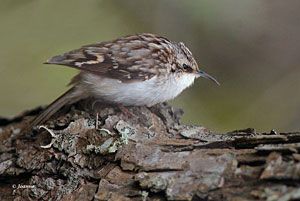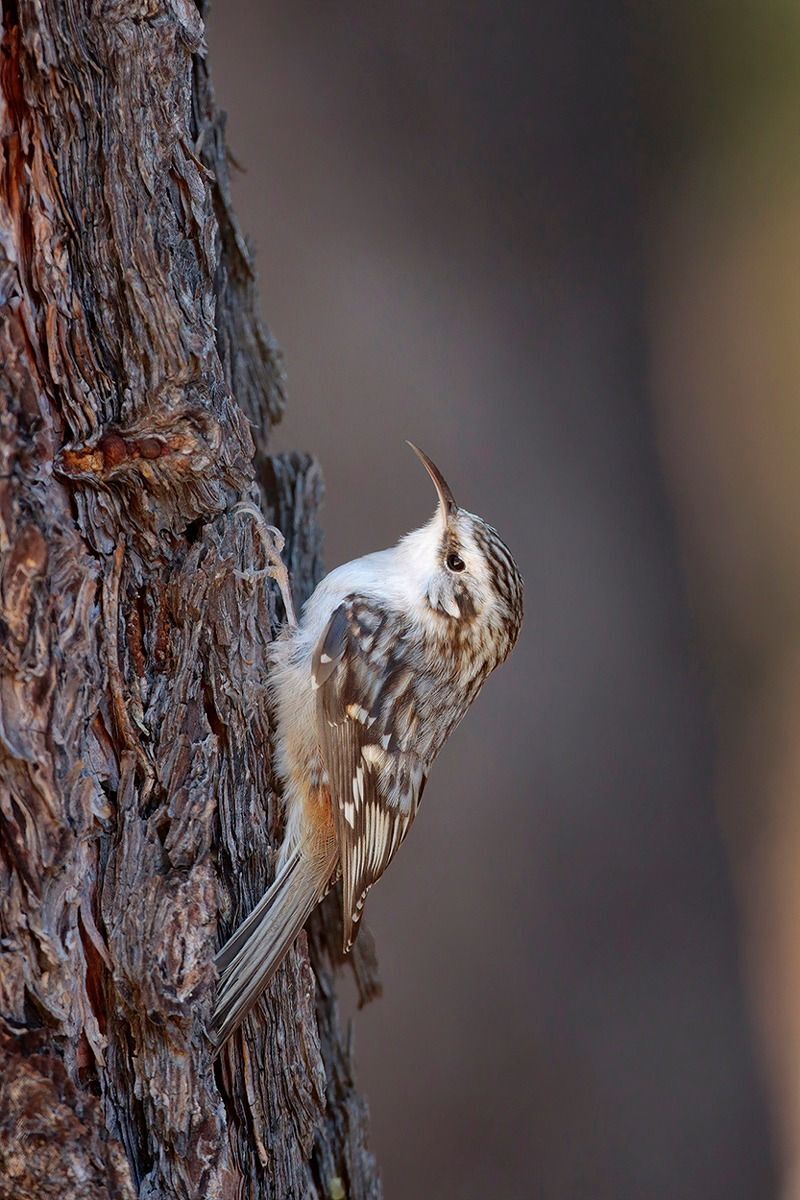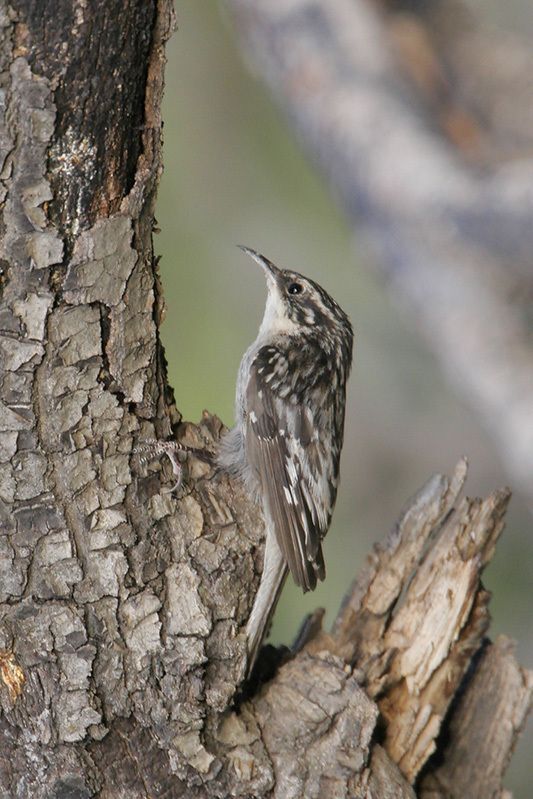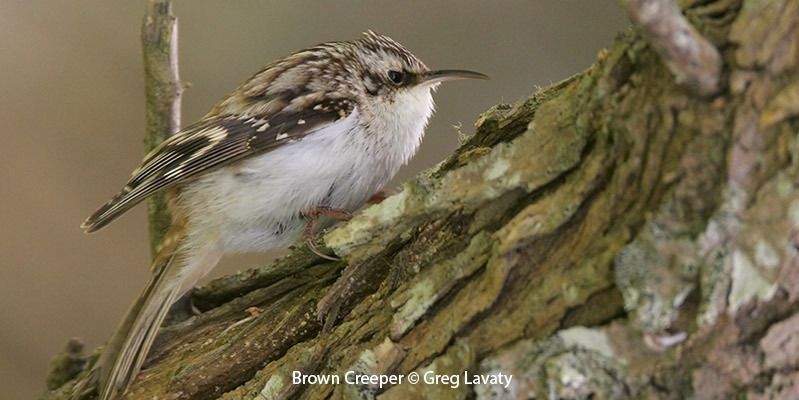
© Joanne Kamo
Brown Creeper
Certhia americana
Family: (Certhiidae) Creepers
Preferred Habitat: Woodlands.
Seasonal Occurrence: Common October through April. Greatest numbers January - March.
Notes by Vicki Stittleburg: The Brown Creeper has mottled, brown and white upperparts, white underparts, a brown head with a pale eyebrow, a white throat, a short, downcurved bill, and buffy undertail coverts. This plumage allows the bird to camouflage with the bark of a tree; it often goes unnoticed until what looked like a flake of bark suddenly takes the shape of a bird.
Aptly named, the Brown Creeper forages for small insects and spiders by slowly spiraling up a tree trunk. Creepers move with short, jerky motions using their stiff tails for support. When the bird reaches the upper branches, it flies to the base of another tree and begins another foraging ascent. Though Brown Creepers are common woodland birds, they can be difficult to detect. Their high pitched 'tesee' call often reveals their presence. The greatest numbers of Brown Creepers in the Houston area are observed between January and March.
Profile by Carrie Chapin: The Brown Creeper is a unique species as the only North American member of the tree creeper family. Brown Creepers are uncommon in southeastern Texas and can be found foraging in dead and dying trees, with a preference for conifers. These birds leave the area in late winter to breed in the forests of the western U.S., Appalachia, and the New England states. Their nonbreeding range encompasses most of the continental U.S. but only where stands of trees are present. These birds often forage in the treetops in mixed flocks with Yellow-rumped Warblers, woodpeckers, and many small passerines.
Brown Creepers have no similar species and can be identified by their streaky brown back, white belly, long decurved bill, and spiked brown tail. Brown Creepers usually forage by hugging the bark of trees and spiraling up while probing for insects. They can even be seen clinging to the undersides of branches. However, their cryptic coloration often makes them hard to locate and they can be found most easily by listening for their quiet see-see-see-see calls, often sounding like a trill. However, this call can be confused with the calls of Golden-crowned Kinglets. Brown Creepers eat almost exclusively insects but occasionally seeds or suet from feeders.
Brown Creepers make their cup-shaped nests under the loose bark of large dead or dying trees. The male brings the female spider egg cases, which she uses to hold together sticks and leaves to form the nest. Five to six eggs are laid and incubated for two weeks. Nests are predated upon by chipmunks, deer mice, and squirrels. The surviving young leave the nest after 14-20 days.
Brown Creepers can be seen at Houston Audubon’s sanctuaries between October and March. Be sure to listen carefully and watch the tree trunks to see these cryptic critters!
-
Cornell Lab of Ornithology
-
Field Guide
-
Bird Library

© Greg Lavaty, www.texastargetbirds.com

© Greg Lavaty, www.texastargetbirds.com

© Greg Lavaty, www.texastargetbirds.com


